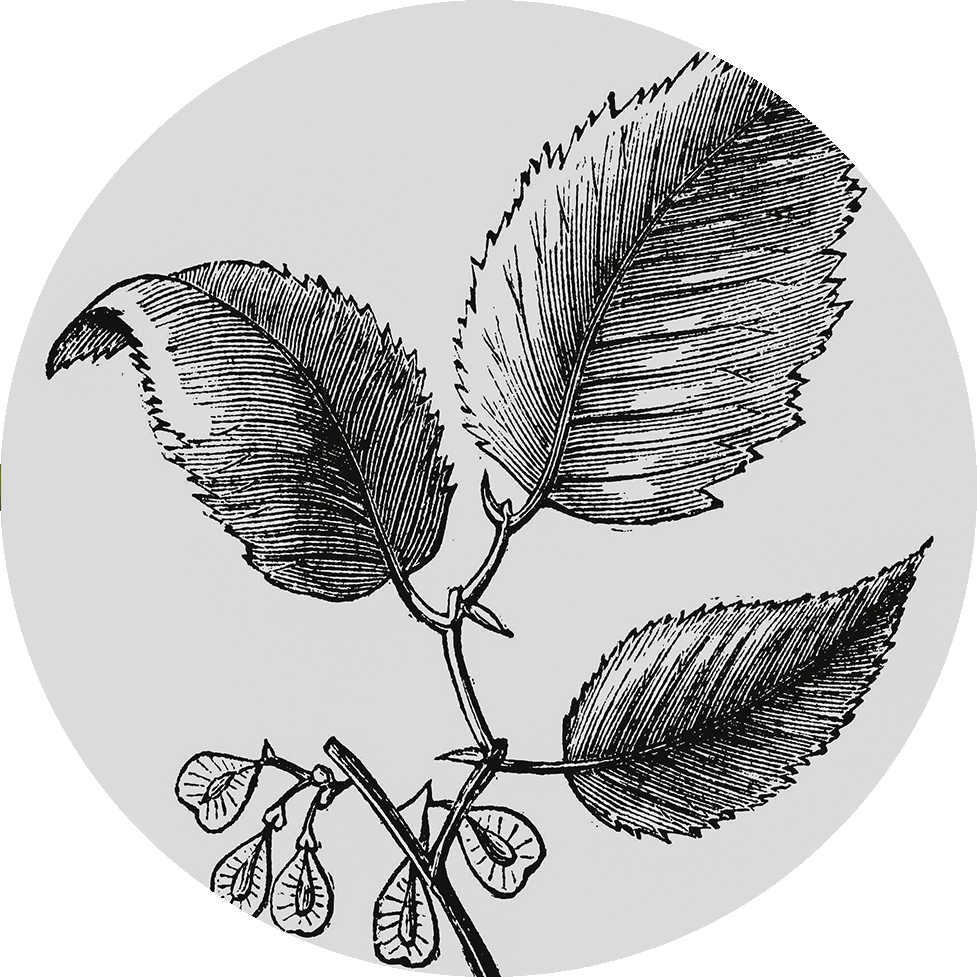Ingredients
Slippery Elm

LATIN NAME:
Ulmus Fulva (Bark)
COMMON NAME:
Slippery Elm
LOCATION:
Eastern U.S., Southern Canada
DESCRIPTION:
Slippery elm is a deciduous tree native to the eastern United States and southern Canada. The elms bloom from March to May, producing small, brightly-colored red buds. Slippery elm bark is harvested for medicinal purposes, and appears to be very safe with proper administration. Slippery elm can be prepared as a tea, cream, or topical dressing.
Slippery elm bark was used during the American Revolution as a folk remedy to heal battered eyes and gunshot wounds. Slippery elm bark, wild cherry bark, and syrup mixed together have long been a popular cough remedy.
TRADITIONAL APOTHECARY:
Slippery elm bark, wild cherry bark, and syrup mixed together have long been a popular cough remedy. The mucilage found in the bark is also mixed with water to create a gel-like substance to coat and soothe the mouth, throat, stomach, and intestines. It has been used to treat digestive disorders, such as diarrhea and gastroenteritis. It is also used to treat constipation, colic, hemorrhoids, irritable bowel syndrome, and Crohn’s disease. Slippery elm bark can be blended with cream and applied directly as a topical ointment to assist in the healing of bruises, cuts, boils, burns, and even eczema.












